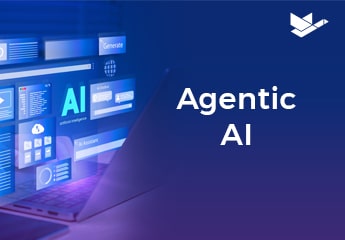As Duck Creek Technologies’ product strategy and innovation expert, I’ve had the privilege of witnessing the insurance and data transformation within the Property & Casualty (P&C) insurance industry.
We stand at a pivotal moment in our industry where P&C insurance carriers can harness the full potential of their own data to drive end-to-end transformation across their business operations.
Historically, P&C insurers have relied on legacy systems, siloed data, and traditional processes. However, the digital age demands adaptability and responsiveness. This is where using your own data becomes a game-changer. Here’s how P&C insurers can make it happen:
- Recognize Data as a Strategic Asset
- Encourage Data Integration and Foster Accessibility
- Implement Advanced Analytics and AI
- Humanizing Experiences and Ethical Use of AI:
- Improve Risk Management and Underwriting with Data
- Streamline Claims Processing and Enhance Fraud Detection
- Ensure Regulatory Compliance and Ease Reporting with Data
- Foster Continuous Improvement in Data Utilization
- Prioritize Cybersecurity and Uphold Data Privacy
- Build Collaborations and Partnerships for Data Solutions
- Empowering P&C Insurance Transformation through Data
-
Recognize Data as a Strategic Asset
Data is the lifeblood of the insurance industry. A survey by McKinsey found that organizations that included data in their strategic decision-making were 23 times more likely to outperform competitors in customer acquisition and six times more likely to retain customers.
The first step in an insurer’s transformation journey is recognizing that data is a strategic asset, not just an operational necessity. Whether it’s policy information, claims data, operational performance, customer demographics, or market trends, data holds valuable insights that can drive innovation.
-
Encourage Data Integration and Foster Accessibility
Break down data silos within the organization. Invest in modern, flexible data architecture that integrates data from various sources. This integration must be coupled with user-friendly and scalable tools to make data accessible to everyone within the organization.
-
Implement Advanced Analytics and AI
According to a McKinsey report, AI could potentially deliver additional economic output of around $13 trillion by 2030, increasing global GDP by about 1.2 percent yearly.
Specifically for the insurance sector, when used for predictive analytics and generative assistance (GenAI), powered by machine learning, AI can drive growth and efficiency. Insurers who adopt AI early, in their operations as well as in their customer facing experiences, stand to share a significant revenue windfall.
-
Humanizing Experiences and Ethical Use of AI:
Data and AI insights can enhance customer interactions by providing personalized experiences based on policyholder’s needs and risk profiles. However, careful ethical considerations must govern the use of AI, ensuring respect for individuality, privacy, and providing contextually appropriate, empathetic responses.
-
Improve Risk Management and Underwriting with Data
Leveraging data enables more accurate risk assessment and pricing. Insurers can refine underwriting processes, better segment portfolios, and minimize exposure to high-risk scenarios. The result is a more profitable and sustainable business model.
-
Streamline Claims Processing and Enhance Fraud Detection
Data analytics can expedite claims processing and enhance fraud detection. By analyzing historical claims data, insurers can find unusual patterns that may indicate fraud. Quick and accurate claims settlement improve policyholder trust and satisfaction.
-
Ensure Regulatory Compliance and Ease Reporting with Data
The insurance industry is subject to stringent regulations. Leveraging data can streamline compliance efforts and reporting, which enables insurers to maintain transparency and meet regulatory requirements more efficiently.
-
Foster Continuous Improvement in Data Utilization
Data isn’t a one-time solution; it’s an ongoing resource. Regularly assess data models, data analytics tools, and processes – everything that powers data analytics – looking for opportunities to refine and enhance underwriting and claims capabilities. Continuous improvement means insurers remain competitive and adaptable in a dynamic market.
-
Prioritize Cybersecurity and Uphold Data Privacy
With the power of data comes the responsibility of data protection. According to IBM’s most recent Cost of a Data Breach report, the average global cost of a data breach in 2023 hit a record high of $4.45 million, representing a 2.3% increase compared to the previous year and an alarming rise of 15.3% since 2020. This highlights the need to invest in robust cybersecurity measures to safeguard data and policyholders’ privacy. Compliance with data protection regulations is not only ethical but also essential for maintaining trust in the digital age.
-
Build Collaborations and Partnerships for Data Solutions
Leveraging data might require partnerships with technology experts who can supply the tools and expertise needed. Collaborate with innovative software providers who specialize in insurance solutions.
Empowering P&C Insurance Transformation through Data
In conclusion, the property and casualty insurance industry is poised for a transformative journey, and the key to success lies within insurers’ own data. The data-driven insurance carrier will not only survive but thrive in this ever-evolving landscape.
Embrace the power of data, leverage cloud services to accelerate your outcomes, continuously adapt, and build a future where business thrives on insights, agility, and the ability to serve policyholders better than ever before. The time is now for P&C insurance carriers to unleash the full potential of their data and drive their end-to-end transformation.






